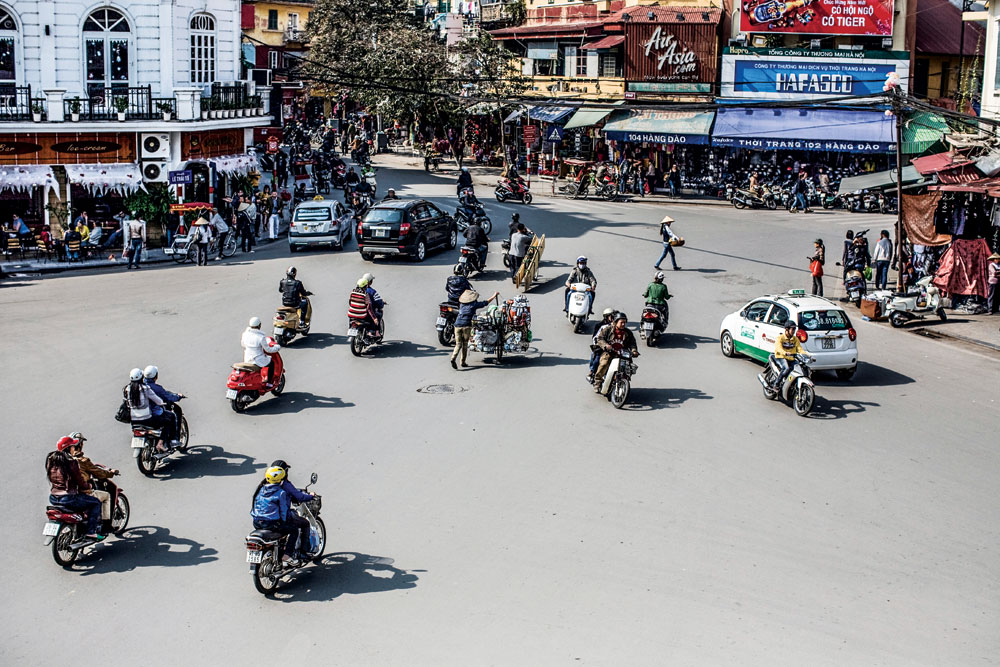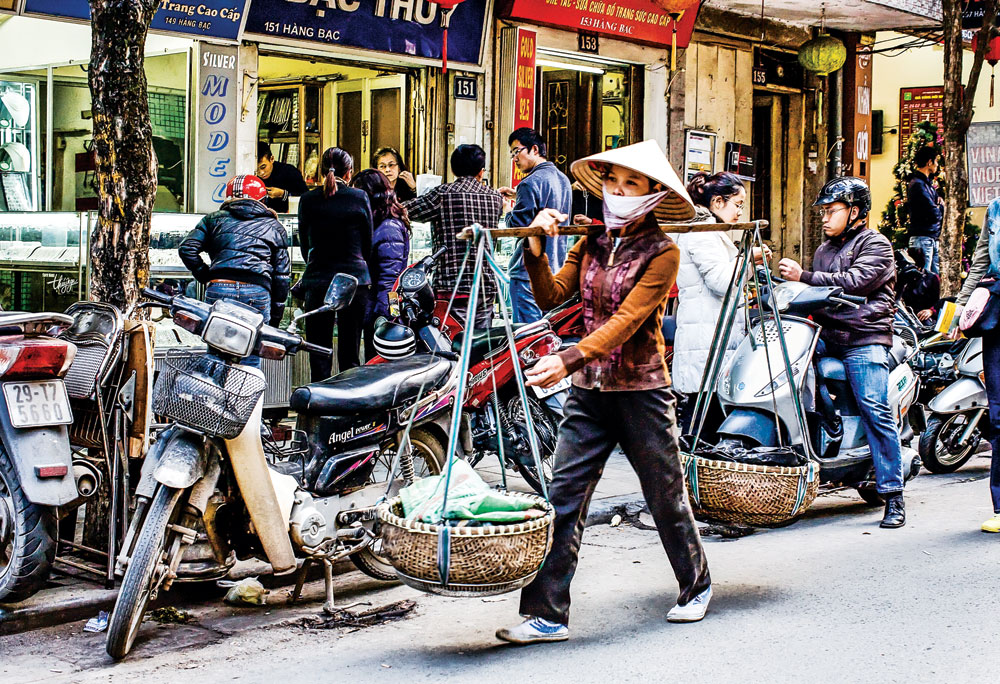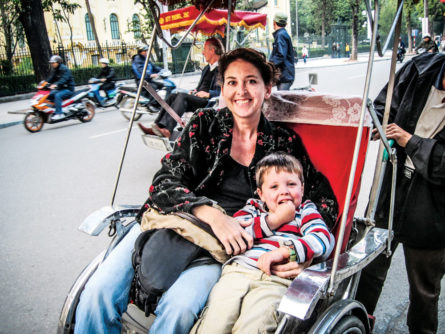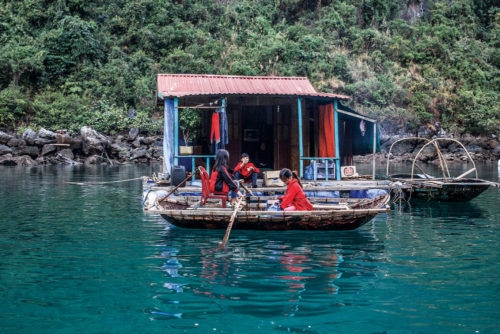
Much of Hanoi reveals a life without cars—most people are on foot, motorbike or tuk-tuk. Bartering is common and shopkeepers live and work in their stalls. A close look reveals a back room with beds, hot plates and sinks.
Known for its complex history, delicious pho, and iconic landscapes, Vietnam has always been high on our list of places to experience. And experiencing it with our children was important to us. Vietnam marked our second trip to Asia—and our children’s first trip to a communist country, as Vietnam is one of the five remaining communist countries today.

At Halong Bay, limestone karsts emerge from the blue-green water and junks, ancient Chinese sailing ships, are still used today.
Travel to Vietnam requires a visa. You may apply for an e-Visa ahead of time through the Vietnam Immigration website. Or you may buy one on arrival. Buying a Visa on arrival requires a pre-approval letter, easily obtained through a tour operator. Upon arrival, we presented the letter and $25 in cash per visa. Credit cards are not accepted for the visa on arrival.

In Hanoi’s Old Quarter, wares are bought and sold at the various markets and carried on shoulder poles or bicycles.
We started our trip in Hanoi, a fascinating city with a mix of old world charm, French Colonial influences, crumbling narrow alleyways and some of the best-preserved ancient architecture in the world. What struck us immediately was the attention and respect the Vietnamese showed our children. A server in a restaurant remarked that our children were well behaved. When we responded we didn’t think they were behaving appropriately, he replied that children are loved and revered in his culture. They are “allowed to get away with anything” and welcomed everywhere—a stark departure from attitudes in the United States.

The author, Melissa Downham and her 4-year-old son Max in 2011.
A must is an extensive tour of the Old Quarter’s bustling markets with its narrow streets, tuk-tuks and virtually no cars in sight. Tuk-tuks are a popular way for both tourists and locals to get from place to place, and they fascinated our children. Peering into the shops, we learned that shopkeepers both live and work in their stalls. In the front of the stall, business and bartering is conducted. But a closer look reveals a room in back with beds, hot plates and sinks. Vietnamese shopkeepers live a simple and hard-working life. We were glad we had a guide to help us navigate and understand the way of life in the Old Quarter.

The bay is populated by self-contained floating fishing villages.
Loudspeakers, used for air raid sirens during the Vietnam War, and an astounding labyrinth of wires decorate the buildings above the streets. The speakers blare “public information” every morning and afternoon, giving details about military enrollment, vaccinations and pension payments. Our guide told us the speakers represent the power of the Vietnamese government. Eventually, the noise of the speakers fades into the overall din of the streets and motorbikes. Our children couldn’t believe the tangle of wires and wondered why there were so many.

Baskets of bananas being carried on a bicycle in Hanoi’s Old Quarter.
Much of Hanoi reveals a life without cars—most people are on foot, motorbike or tuk-tuk—and they live without conveniences. Wares are bought at the various markets and carried on shoulder poles or stacked impossibly high on a bicycle, not on large trucks. Lunch is a bowl of pho, a delicious noodle soup popular in Vietnam. Laundry is hung out to dry on the side of the building, not thrown in the dryer. There are modern conveniences in parts of Hanoi, but the Old Quarter represents much of the Hanoi culture.
Our trip continued on to Halong Bay for a junk cruise. Junks, ancient Chinese sailing ships, are still used today as a popular way to navigate water. And Halong Bay is one of the most popular spots to view the iconic limestone karsts emerging from the blue-green water. Halong Bay is populated by self-contained floating fishing villages. Sixteen hundred people who live off the land and sea actually live in houses built right in the water.
We loved showing our children another way of life—a life that didn’t involve a large house, a refrigerator and a big shower. It was rewarding to see our son wave to a little boy his age who was fishing off the “porch” of his house. Everywhere we went, we were treated to friendly smiles. Our week in Vietnam wasn’t long enough and we hope to go back one day.
Melissa Downham is a travel advisor and travel blogger at www.theroamingfamily.com. She lives in Stapleton with her husband and two kids.



0 Comments